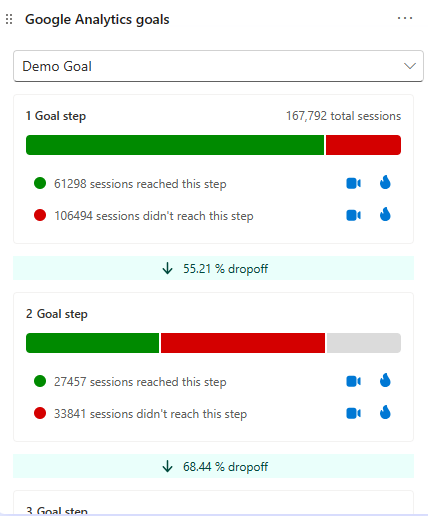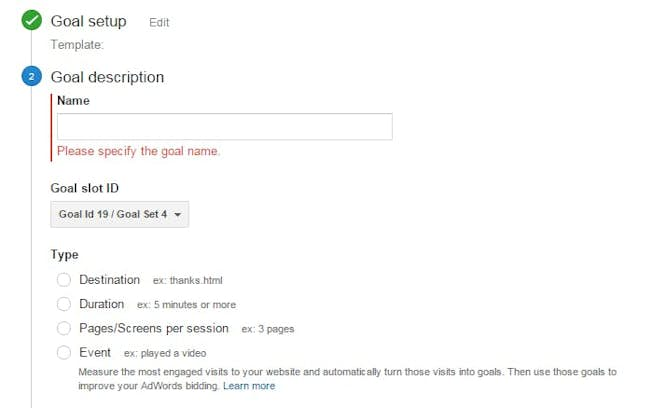What Data Is Google Analytics Goals Unable to Track: Important Info
What Data Is Google Analytics Goals Unable to Track: Important Info
Blog Article
Discover the Limitations of Google Analytics Goals: Revealing the Information Types That Remain Untrackable
As services significantly depend on data-driven decision-making, understanding the limitations of devices like Google Analytics becomes vital. While Google Analytics Goals offer useful understandings right into individual interactions, there exist data kinds that elude monitoring, positioning obstacles to a comprehensive understanding of customer behavior. These untrackable information kinds elevate questions concerning the precision and completeness of the analytics information that companies greatly rely upon for their electronic techniques. Interested to discover the covert dead spots in your information evaluation process?
Insufficient Customer Journey Tracking
Incomplete individual trip monitoring within Google Analytics can prevent the capacity to properly examine customer habits. When the customer journey is not totally tracked, there are gaps in the data that prevent an extensive understanding of how individuals connect with a site. This lack of insight can result in missed out on opportunities for optimization and improvements to the customer experience.
One typical issue with insufficient individual journey monitoring is the lack of ability to see the full course that users take in the past completing a goal or leaving the website. Without this information, it is testing to determine where customers may be experiencing challenges or rubbing factors that prevent them from converting. In addition, insufficient tracking can cover the effect of specific advertising efforts or web site changes on customer habits.
To resolve this limitation, it is vital to establish up appropriate tracking devices within Google Analytics to catch the entire individual journey. This may involve establishing occasion tracking, objective funnels, or making use of tools like Google Tag Supervisor to ensure that no vital interactions go unrecorded. By getting an extensive view of the user trip, website proprietors can make even more enlightened decisions to enhance individual involvement and drive conversions.
Acknowledgment Difficulties
Browsing through attribution obstacles in Google Analytics requires a complete understanding of how different touchpoints contribute to the total conversion procedure. Attribution obstacles arise from the complexity of modern-day consumer journeys, where customers engage with multiple channels prior to converting. Google Analytics supplies different acknowledgment versions like very first touch, last touch, and direct, each using a different viewpoint on exactly how credit is designated to touchpoints along the conversion course. These models might not always accurately mirror the true impact of each touchpoint on the conversion.
One typical acknowledgment obstacle is the trouble in associating conversions to the correct resource, particularly in cases where customers engage with multiple networks prior to converting. In addition, cross-device monitoring postures an additional attribution difficulty, as users frequently switch between devices during their journey, making it testing to track their communications perfectly.
Offline Conversions
Offered the difficulties related to connecting conversions properly in online channels, the measurement of offline conversions presents a considerable opportunity for marketers seeking a more detailed understanding of their clients' trip. Offline conversions refer to activities that customers take in the physical globe, such as making acquisitions in brick-and-mortar shops or over the phone, going to occasions, or involving with printed materials - what data is google analytics goals unable to track. These conversions are crucial for businesses that operate both online and offline, as they supply beneficial insights right into the efficiency of advertising projects across different touchpoints
Tracking offline conversions generally posed a significant challenge for marketers, as it was challenging to connect these activities back to certain online interactions accurately. With improvements in innovation, such as the assimilation of CRM systems, special identifiers, and voucher codes, services can currently link the gap in between online and offline data to gain a more alternative view of client actions. By effectively measuring offline conversions, marketing professionals can enhance their strategies, allot resources more efficiently, and inevitably improve the overall client experience.
Cross-Device Tracking
Cross-device monitoring plays a critical role in recognizing the interconnected nature of consumers' electronic interactions throughout several tools. In today's omnichannel globe, where useful source individuals seamlessly switch in between smart devices, desktops, and tablet computers, tracking their actions across these devices is essential for marketers to get a thorough view of their consumer journey.

Moreover, privacy concerns and guidelines such as GDPR and CCPA have further difficult cross-device monitoring. With individuals demanding more control over their information and boosted limitations on tracking technologies, marketers must locate cutting-edge and privacy-compliant means to link customer interactions throughout tools.
Dynamic Web Content Interaction
Comprehending user engagement with dynamic content is critical in enhancing digital marketing methods for boosted audience communication. Dynamic material refers to website elements that change based upon individual behavior, preferences, or other variables, supplying an individualized experience. However, tracking individual interactions with vibrant web content postures obstacles for conventional analytics devices like Google Analytics.
While Google Analytics can track basic interactions like clicks and page sights, it may struggle to capture more nuanced engagements within dynamic web content. what data is google analytics goals unable to track. Metrics such as time invested on particular vibrant components, float activities, or communications within pop-ups are frequently not easily measurable making use of typical tracking methods. This constraint impedes marketing professionals' ability to totally realize how customers useful site are engaging with vibrant content and customize their approaches appropriately

Verdict
Finally, Google Analytics goals have constraints in tracking incomplete user trips, associating conversions accurately, recording offline conversions, tracking cross-device communications, and measuring dynamic content interaction. These restraints highlight the significance of checking out extra monitoring methods and tools to acquire a more detailed understanding of customer actions and conversions past what Google Analytics can supply.
While Google Analytics Goals deal valuable insights right into customer communications, there exist information kinds that thwart monitoring, positioning obstacles to a comprehensive understanding of user actions.Insufficient customer trip tracking within Google Analytics can hinder the capacity to accurately analyze customer habits. When the user journey is not fully tracked, there are voids in the information that protect against an extensive understanding of exactly how users connect with a site.One typical issue with incomplete customer journey monitoring is the failure to see the full course that users take before finishing a goal or leaving the website. By obtaining an extensive view of the customer journey, site proprietors can make more informed decisions to enhance customer interaction and drive conversions.
Report this page